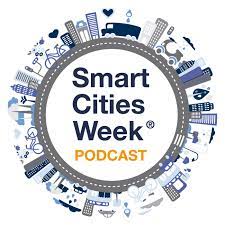From Rome’s vast Trajan’s Forum to Angkor Wat’s stone temples, cities have been magnets for trade, art, and culture since ancient times. Urban living as we know it first emerged around 3500 B.C.E. along the Nile Valley and Sumerian coast. Unlike the semipermanent villages that came before them, these social and political hubs were built around sophisticated systems of agriculture and transportation. Today, around 56 percent of the world’s population is urban, and by 2050 that number could jump to around 70 percent, by some estimates.
While metropolises continue to serve as centers for economic growth, they’re also facing unprecedented challenges: affordable housing crises, unemployment, healthcare shortages, food and water scarcity, and social inequity. They’re also on the front lines of climate change. With 90 percent of all urban areas located on coasts, they’re vulnerable to rising seas, in addition to heavy rainfall and extreme heat.
But with these obstacles come opportunities to reimagine our densest spaces. In the past two decades alone, more than 150 new cities have sprung up from scratch in more than 40 countries, and centuries-old settlements have begun to replace their crumbling infrastructures and establish radical new ways of living. Here are seven centers of innovation tackling the most daunting issues of our time—from climate change and overcrowding to biodiversity loss and poverty—that can serve as blueprints for communities around the globe.
In the 1980s and ’90s, Medellín became infamous as the center of Colombia’s drug trade. At the same time, growing political violence in rural areas meant hundreds of thousands of people fled to urban centers in search of safety and economic opportunity. Informal settlements cropped up along the slopes of the Aburrá Valley, where low-income housing crowded on the fringes of the city at an average of around 160 dwellings per acre (about as dense as downtown Chicago or Portland). Public transit couldn’t navigate the steep terrain, narrow streets, and numerous streams. The city’s most disenfranchised faced hours-long commutes to jobs and basic services, and became increasingly isolated—geographically, socially, and economically. Years of research suggest areas of concentrated poverty experience higher crime rates, poor health outcomes, and low school attendance—but more robust public transit can help create more equitable cities. In 2004, Metro de Medellín introduced a creative, low-cost solution: the first aerial cable car system fully integrated into public transport. Average trip times dropped from 120 minutes to 65. Some planners think it could be a useful model for other cities—from Seattle to Mumbai—where low-wage workers are pushed to the periphery. Medellín’s success has inspired similar projects throughout Latin America, including in Caracas, Mexico City, and La Paz.
The desert city of Phoenix is one of the fastest-growing metropolitan areas in the United States, having added more than 750,000 residents in just the past decade. It’s also known for being one of the worst culprits when it comes to urban sprawl, meaning residents rely heavily on cars. Just outside Arizona’s unsustainable capital, a new apartment development called Culdesac Tempe has set out to be the first automobile-free community created from scratch in the US. Conveniently located along the light-rail line to downtown Phoenix, this neighborhood sits on a 17-acre lot and will feature a restaurant, a coffee shop, an urban market, e-bikes, scooter shares, and 761 apartments. The first residents—who are strictly forbidden to bring in cars or park in surrounding neighborhoods—are expected to arrive in 2022. While Culdesac Tempe’s no-car rules may seem extreme, it’s the kind of radical action cities are embracing to cut down on parked cars, combat greenhouse gas emissions, and boost health among city dwellers. In fact, the “15-minute city”—a bold urban planning concept based on the idea that everyone should be able to access all their basic needs with a short walk or bike ride—is gaining traction around the world. Paris, for example, has added bike routes and created mini green spaces to increase connectivity and reestablish social connections.
Source : https://www.popsci.com/technology/young-cities-urban-planning-solutions/









